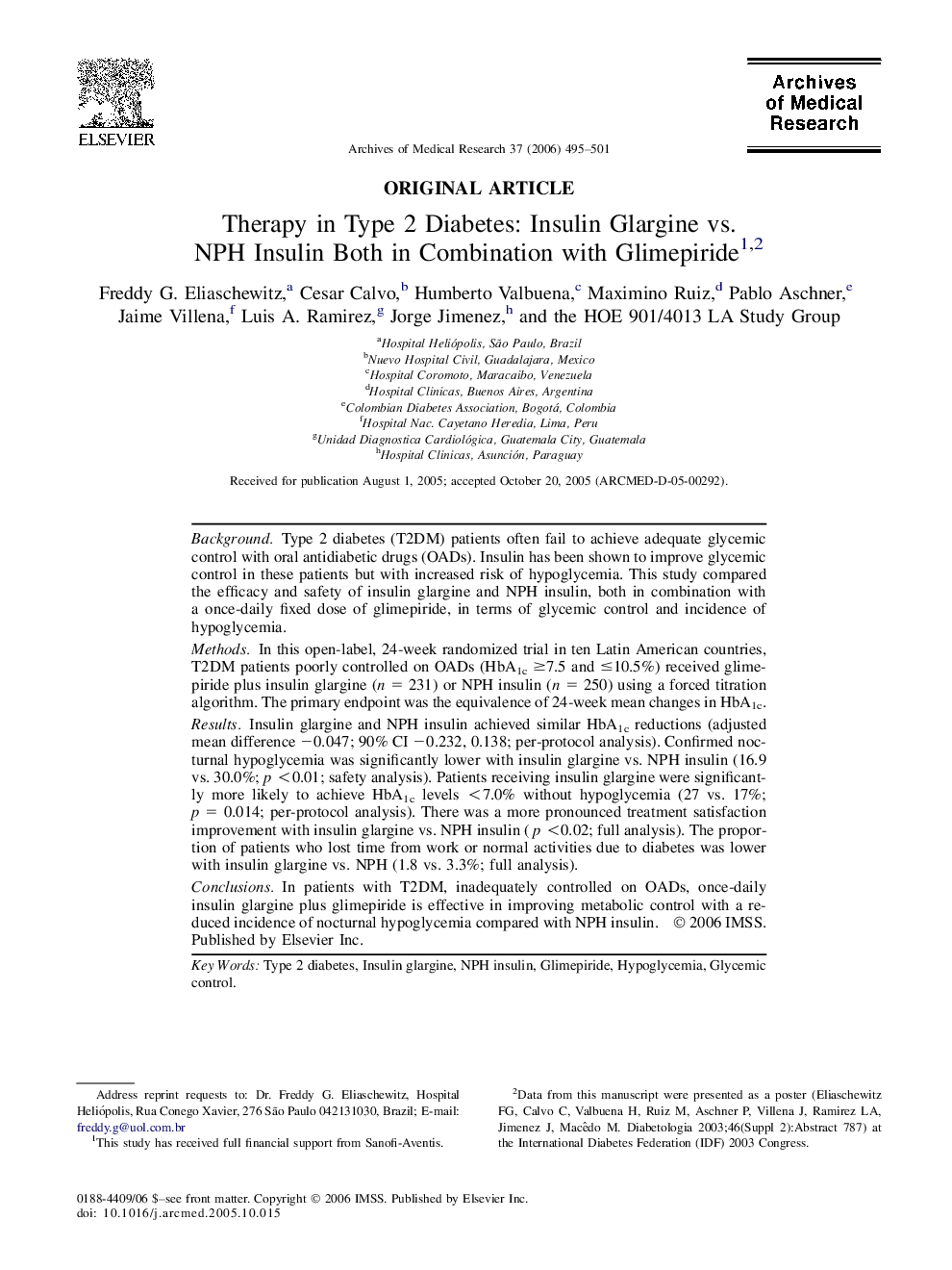| Article ID | Journal | Published Year | Pages | File Type |
|---|---|---|---|---|
| 3447668 | Archives of Medical Research | 2006 | 7 Pages |
BackgroundType 2 diabetes (T2DM) patients often fail to achieve adequate glycemic control with oral antidiabetic drugs (OADs). Insulin has been shown to improve glycemic control in these patients but with increased risk of hypoglycemia. This study compared the efficacy and safety of insulin glargine and NPH insulin, both in combination with a once-daily fixed dose of glimepiride, in terms of glycemic control and incidence of hypoglycemia.MethodsIn this open-label, 24-week randomized trial in ten Latin American countries, T2DM patients poorly controlled on OADs (HbA1c ≥7.5 and ≤10.5%) received glimepiride plus insulin glargine (n = 231) or NPH insulin (n = 250) using a forced titration algorithm. The primary endpoint was the equivalence of 24-week mean changes in HbA1c.ResultsInsulin glargine and NPH insulin achieved similar HbA1c reductions (adjusted mean difference −0.047; 90% CI −0.232, 0.138; per-protocol analysis). Confirmed nocturnal hypoglycemia was significantly lower with insulin glargine vs. NPH insulin (16.9 vs. 30.0%; p <0.01; safety analysis). Patients receiving insulin glargine were significantly more likely to achieve HbA1c levels <7.0% without hypoglycemia (27 vs. 17%; p = 0.014; per-protocol analysis). There was a more pronounced treatment satisfaction improvement with insulin glargine vs. NPH insulin (p <0.02; full analysis). The proportion of patients who lost time from work or normal activities due to diabetes was lower with insulin glargine vs. NPH (1.8 vs. 3.3%; full analysis).ConclusionsIn patients with T2DM, inadequately controlled on OADs, once-daily insulin glargine plus glimepiride is effective in improving metabolic control with a reduced incidence of nocturnal hypoglycemia compared with NPH insulin.
